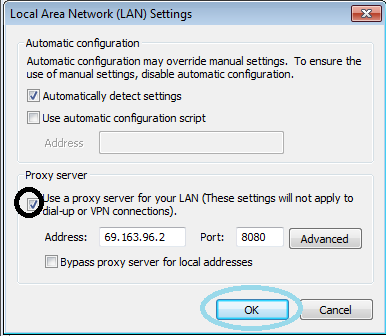YHS Delta Search bar can be installed onto your computer legally, however, there are many cases in the cyber world today when this search bar can be implanted into your system without your consent, permission or approval. Surely, this is not a fair way of attracting your attention or drawing traffic to this particular site. And, of course, it is a very annoying thing to experience all your search queries being diverted through delta-search.com engine. Previously we’ve already written an article about Delta Search Engine redirection issue and how to fix it. This article today is the update of that post that we discussed earlier.
The ways how YHS Delta Search may attack your browser might be different. This often may take place when users install some software (which is absolutely legal), however, its installer may be bundled with the installation of YHS Delta Search toolbar onto your preferred browser. Without a doubt, this is the responsibility of user to uncheck the installation of this add-on, and sometimes users fail to do it or to notice this option. However, as we’ve already mentioned, there are many cases today when Delta Search Engine redirection takes place without user’s participation. If this is the case, you will surely find the presence of delta-search.com redirect annoying and unwanted.
YHS Delta Search browser redirection may occur with any browser, including Internet Explorer, Mozilla Firefox, Google Chrome and Opera. To fix this redirection issue, you need first of all to undertake some manual steps. Make sure that you check your default startup page settings, as well as all possibly proxy settings that can participate in the redirection process. Check your browser add-ons to get rid of all stuff associated with YHS Delta Search. Finally, scan your system with legitimate and powerful security software to eliminate all unwanted parasites from your system. Please follow our detailed step-by-step instructions below.
Browser redirection removal milestones:
- Check the Local Area Network (LAN) settings of your system
- Check whether DNS settings have been changed by Redirect Virus
- Check your Windows HOSTS file contents
- Check Internet Explorer add-ons. Get rid of unknown or suspicious add-ons contained there
- Use Kaspersky TDSSKiller (TDSS Killer) application to get rid of malware belonging to the clan of Rootkit.Win32.TDSS
- Scan your system with decent anti-virus program and malware killer
- Consider using CCleaner to delete unwanted system/temp files and browser cache
- The last but not the least, reset your Router back to the factory default settings
- Check the Local Area Network (LAN) settings of your system a) Open Internet Explorer. In Internet Explorer go to: Tools->Internet Options.
- Check whether DNS settings have been changed by Redirect Virus: a) Open Control Panel (Start->Control Panel). b) Double-click “Network Connections” icon to open it. c) Right-click on “Local Area Connection” icon and select “Properties”. d) Select “Internet Protocol (TCP/IP)” and click “Properties” button. e) Choose “Obtain DNS server address automatically” and click OK.
- Check your Windows HOSTS file contents a) Go to: C:\WINDOWS\system32\drivers\etc. b) Double-click “hosts” file to open it. Choose to open with Notepad. c) The “hosts” file should look the same as in the image below. There should be only one line: 127.0.0.1 localhost in Windows XP and 127.0.0.1 localhost ::1 in Windows Vista. If there are more, then remove them and save changes. Read more about Windows Hosts file here: http://support.microsoft.com/kb/972034
- Check Internet Explorer add-ons. Get rid of unknown or suspicious add-ons contained there a) Open Internet Explorer. In Internet Explorer go to: Tools->Manage Add-ons. b) Uninstall unknown or suspicious Toolbars or Search Providers.
- Use Kaspersky TDSSKiller (TDSS Killer) application to get rid of malware belonging to the clan of Rootkit.Win32.TDSS a) Download the file TDSSKiller.zip and extract it into a folder b) Execute the file TDSSKiller.exe. c) Wait for the scan and disinfection process to be over. Close all programs and press “Y” key to restart your computer.
- Scan your system with decent anti-virus program and malware killer
- Consider using CCleaner to delete unwanted system/temp files and browser cache CCleaner is a freeware system optimization. It’s not a malware removal tool. However, it’s always a good idea to get rid of unnecessary internet/system files or corrupter Windows registry values that may cause various problems to your computer. Download CCleaner free application.
- The last but not the least, reset your Router back to the factory default settings
Windows XP Example:
Windows Vista / Windows 7 Example:
b) Click on “Connections” tab, then click “LAN settings” button. c) Uncheck (untick) the checkbox under “Proxy server” option and hit OK.More detailed TDSSKiller tutorial: http://support.kaspersky.com/viruses/solutions?qid=208280684
Keep in mind that this step is optional and should be completed only if you have followed all the above recommendations and you still have the redirect virus on your computer. First of all, please follow this guide: How to Reset a Router Back to the Factory Default Settings. Then you should flush DNS cache: a)Go to Start->Run (or WinKey+R) and type in "cmd" without quotation marks.
b) In a new window please type "ipconfig /flushdns" without quotation marks and press Enter.Please do not hesitate to contact us at any time if you require any help on our part of if you experience any difficulties. We hope that this information has been helpful to you and remain
Yours faithfully,Virus Removal Videos Blog
















No comments:
Post a Comment